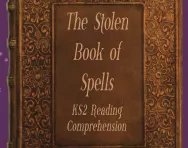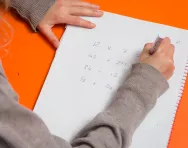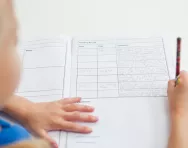TheSchoolRun.com closure date
As we informed you a few months ago, TheSchoolRun has had to make the difficult decision to close due to financial pressures and the company has now ceased trading. We had hoped to keep our content available through a partnership with another educational provider, but this provider has since withdrawn from the agreement.
As a result, we now have to permanently close TheSchoolRun.com. However, to give subscribers time to download any content they’d like to keep, we will keep the website open until 31st July 2025. After this date, the site will be taken down and there will be no further access to any resources. We strongly encourage you to download and save any resources you think you may want to use in the future.
In particular, we suggest downloading:
- Learning packs
- All the worksheets from the 11+ programme, if you are following this with your child
- Complete Learning Journey programmes (the packs below include all 40 worksheets for each programme)
You should already have received 16 primary school eBooks (worth £108.84) to download and keep. If you haven’t received these, please contact us at [email protected] before 31st July 2025, and we will send them to you.
We are very sorry that there is no way to continue offering access to resources and sincerely apologise for the inconvenience caused.
Reading comprehension explained for parents

Primary school teachers assess children in reading every six weeks. Sometimes this will be by ‘teacher assessment’ where a teacher will read with a group and assess their understanding of a text against a set of objectives which helps them to decide how a child is progressing. In Year 2 and Year 6 children sit the official SATs.
Although national curriculum levels have now been abolished, schools still assess children with a primary-school grading system and children are expected to make steady progress throughout their time at primary school.
Reading comprehension and SATs
The SATs reading papers consist of non-fiction and fiction texts which are usually linked by a common theme. Children are given copies of these texts, plus an answer booklet, which contains questions on the texts and space for answers.
Questions will indicate the maximum number of marks that can be awarded for an answer (1 mark, 2 marks or 3 marks). Sometimes the questions will involve multiple choice answers, or children will be required to complete a table, match up statements or label names of the features of a text.
Many of the questions in a SATs paper will require children to retrieve information from the text, which literally means picking out a relevant bit of information. Some questions involve children inferring information about a theme or characters based on what they have read. Some questions may involve deduction, where children have to draw their own conclusions using reasoning skills.
Children may be asked to give their opinion on something (this will always need to be backed up by evidence from the text). Children may also be asked to comment on the effectiveness of the author’s language.
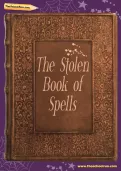
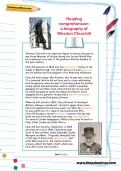
Brilliant reading comprehension resources
- The Stolen Book of Spells workbook
- PLUS 100s of fantastic reading comprehension worksheets
Example reading comprehension text, questions and answers
“Let’s get the dinner on shall we?” said Matthew’s mum.
“What are we having, Mum?” Matthew asked her.
“Cottage pie and peas,” she replied cheerily.
Matthew grinned from ear to ear. Mum smiled back at him.
“I tell you what,” she said, “why don’t you go and learn your spellings for twenty minutes before we have dinner?”
The smile on Matthew’s face disappeared.
“Do I have to?” he whined. Matthew thought practising spellings was a bit like watching paint dry.
Retrieval of information
Example question: What was Matthew’s mum making for dinner?
Answer: Cottage pie and peas.
Inference
Example question: How does Matthew feel about eating cottage pie and peas? How do you know?
Answer: He loves cottage pie and peas. We know this because he grins from ear to ear when his mum tells him that is what she is making for dinner.
Deduction
Example question: What do you think Matthew might do next? Explain why you think this.
Answer: There could be several answers to this, but the person marking the text would be looking for the child to have thought about what Matthew might do, based on what they have read. For example: I think Matthew will go and watch TV instead of doing his spellings because he doesn’t want to do his spellings.
Opinion
Example question: Do you think Matthew’s mum is a kind person? Use evidence from the text to support your answer.
Answer: Yes, I think Matthew’s mum is a kind person because she is cooking his favourite meal. We also know she wants him to do well at school, which is why she asks him to practise his spellings.
Commenting on effectiveness of language
Example question: ‘Matthew thought practising spellings was a bit like watching paint dry.’ Why is this a good way to show how Matthew feels about his spellings?
Answer: The author is comparing spelling practice to watching paint dry to show how boring Matthew finds it.
Practising reading comprehension at home
One of the best ways to improve reading comprehension skills, particularly for KS1 and KS2 SATs, is to practise past papers. If possible, read through the text with your child and practise answering some of the questions together. Don’t forget to discuss what a question is asking – for example, if a question asks for your child’s opinion on something backed up by evidence from the text, you may need to remind them that there are two parts to that question (writing their opinion and then offering evidence from the text to back it up); you may also need to discuss what ‘evidence’ means.
Another way to help your child with their reading comprehension is to discuss books with your child while you are reading, posing similar questions to the examples given above. You could also help them write a book review with some of these types of questions as prompts.
Find more parents' advice about reading comprehension in our Teachers' tips for reading comprehension.





